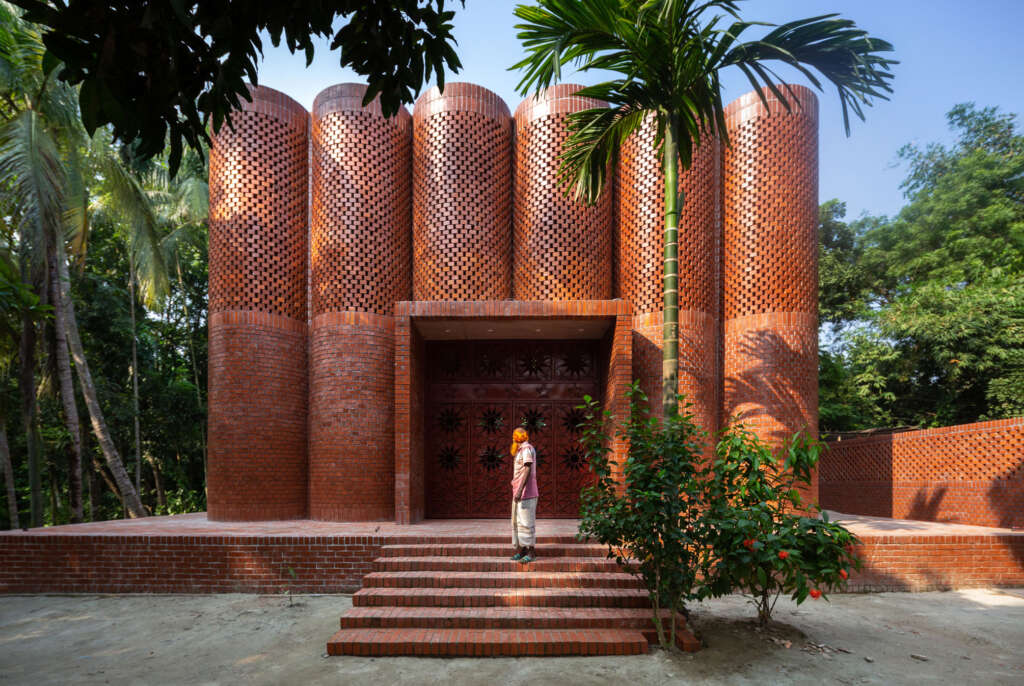
Shah Muhammad Mohshin Khan Mausoleum (Dargah)
Architect: Sthapotik
Location: Shib Bari, Hijuli, Manikgong, Dhaka, Bangladesh
Type: Mausoleum
Year: 2022
Photographs: Asif Salman
Project Brief
The following description is courtesy of the architects. The Project is owned by a renowned Scientist of Bangladesh and he is the eldest son of ‘Pir’ Shah Muhammad Mohsin Khan, who was the famous religious leader of the Manikgonj. The project is the ancestral dargah of the owner. He commissioned Ar. Md. Sharif Uddin Ahammed for designing the Dargah (mausoleum) in his native home Hijuli, Manikgong, to reminisce the memory of the “Pir’ and develop an institution for exercising Islamic Knowledge for the betterment of society. Existing graves belong to ‘Pir’ Shah Muhammad Mohsin Khan Uwaisi (Father), Shah Muhammad Ismail khan Uwaisi (Grand Father), and Begum Noorjahan (Mother). Another grave space has been reserved for the owner himself. The project holds much importance due to the contribution of the ‘Pir’ in spreading Islamic knowledge and practice in the locality.
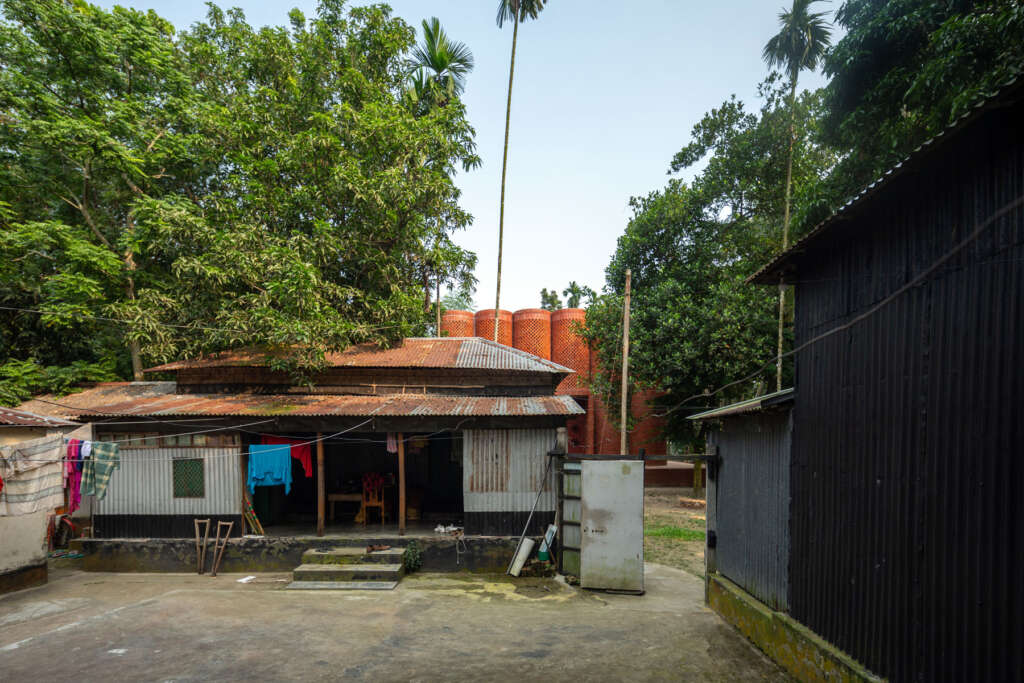
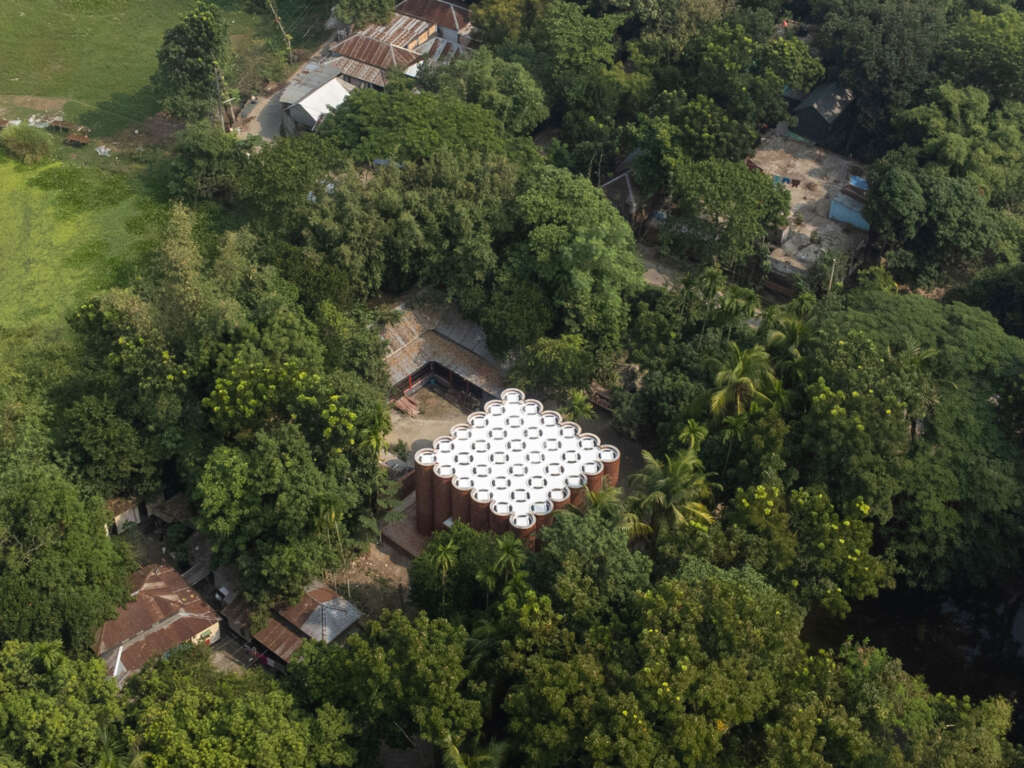
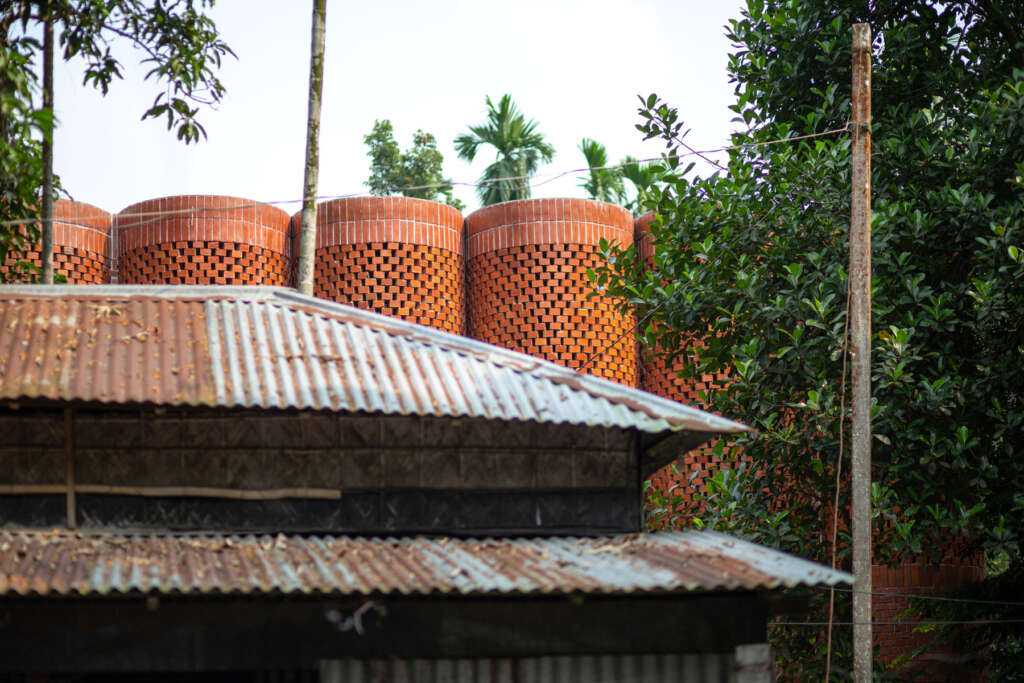
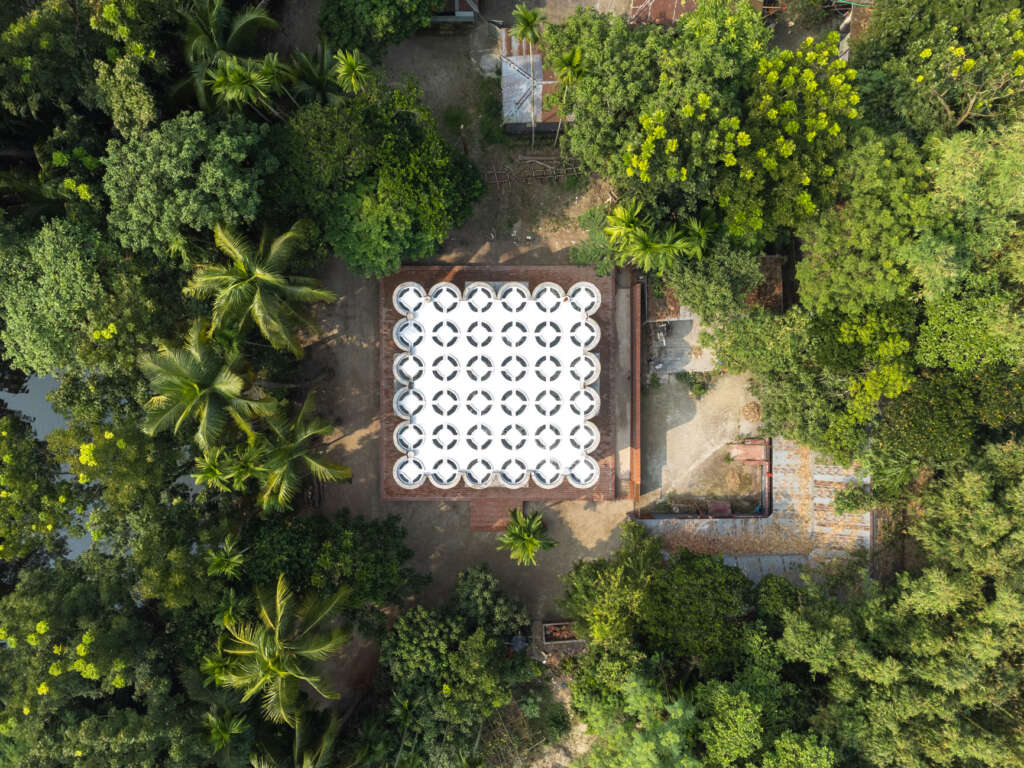
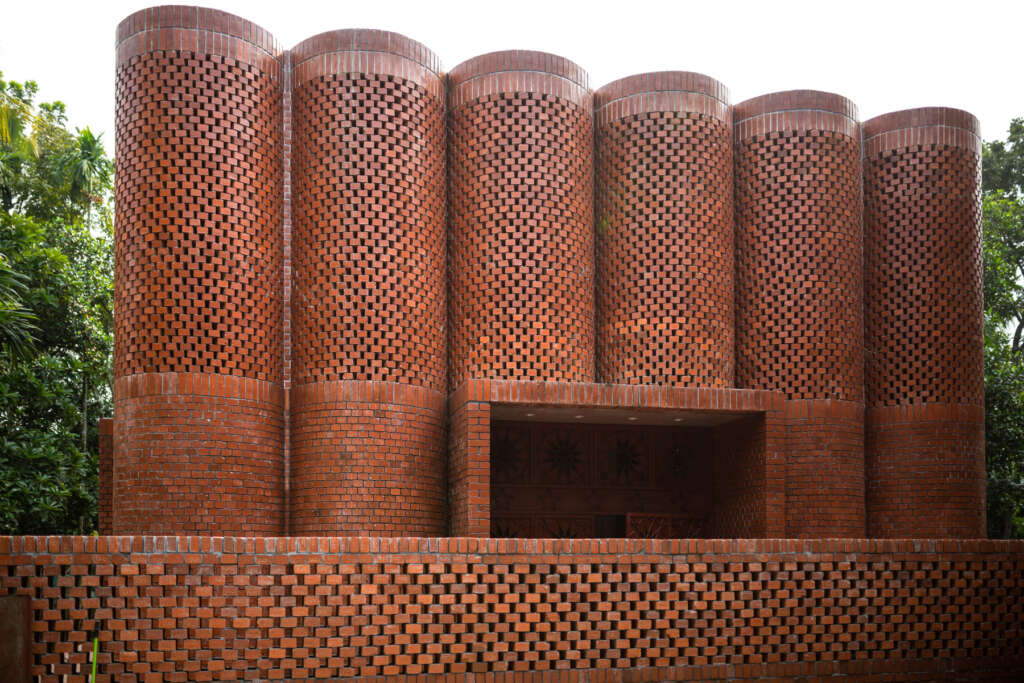
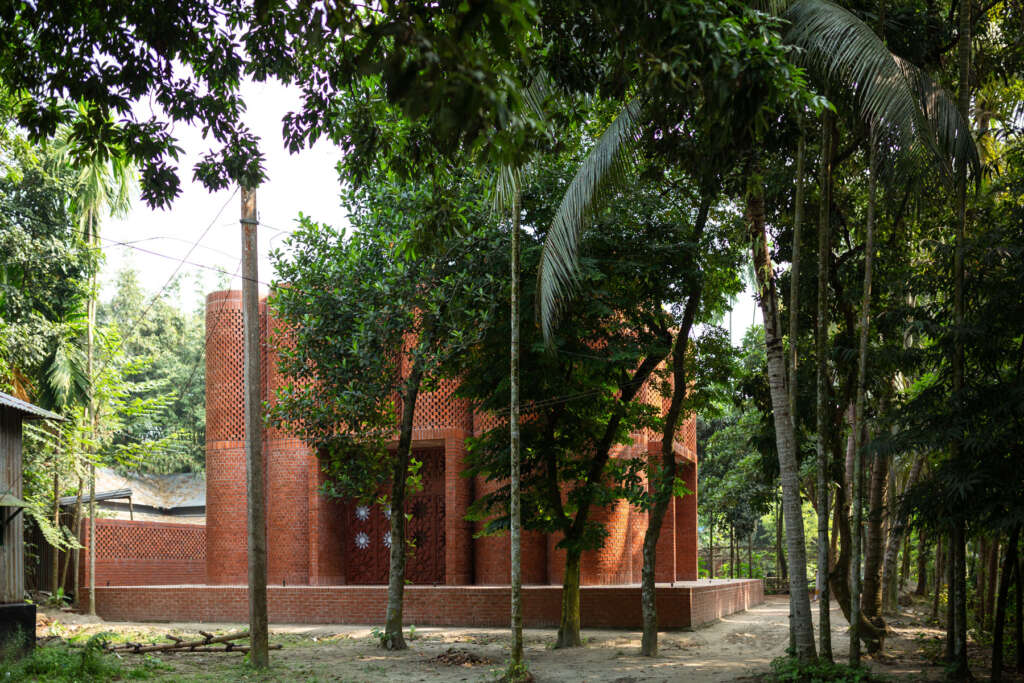
Background
Sufism is one most amazing, thought-provoking aspects of Islam. Sufism is derived from a more philosophical and social standpoint focusing on closeness to Allah (Schimmel, A., 1975). The Sufi saints were involved in the spread of Islam in Bengal through their religious and missionary zeal, exemplary character and humanitarian activities. They even involve in regional politics as advisors to the ruler and influence them to do humanitarian work. The Uwaisi is a Tariqa (pathway) of Sufism that spiritually transmitted the vocabulary of Islamic mysticism, named after Owais al-Qarani. The project is a Dargah for the ‘Pir’ of Uwaisi Tariqa. Though the word “Pir” is a Persian word, it was locally adapted due to the role of the Persian saints in spreading Islam in this region. Existing graves were originally buried inside the residence of the “Pir”. Later on, the ancestors of the ‘Pir’ decided to build a unique (mausoleum) structure over the graves regarding Pir’s memory and contributions.
Bengal has been ruled by diverse powers over the course of time. The very land became the home of multidisciplinary cultures, beliefs and philosophies. And, it humbly adapted to all the diversity and subsequently developed unique characteristics in terms of culture, religious beliefs and architecture. From the 13th century, until the British captured Bengal in the middle of the 18th century, Bengal was ruled by Muslims. Almost three-quarters of mosques were built in Bengal during the independent Sultanate period (1342 to 1576). The mosques and tombs of the Sultani period were mostly Square-plan. Though small numbers of tombs are found in Bengal, they show significant variety and interesting adaptation of the conventional Islamic form to regional tastes and requirements. The formation and materiality of the Dargah are highly inspired by the Sultani period’s mosques and Tombs.
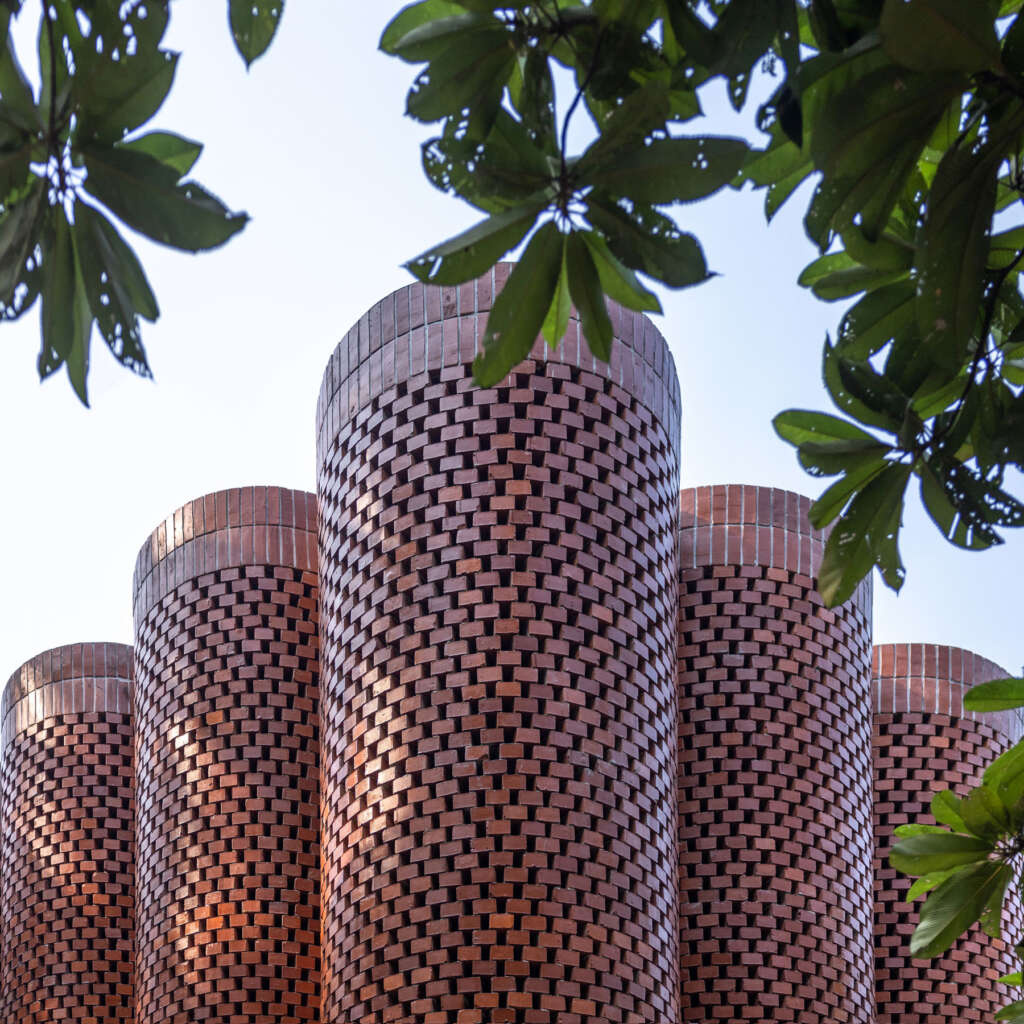
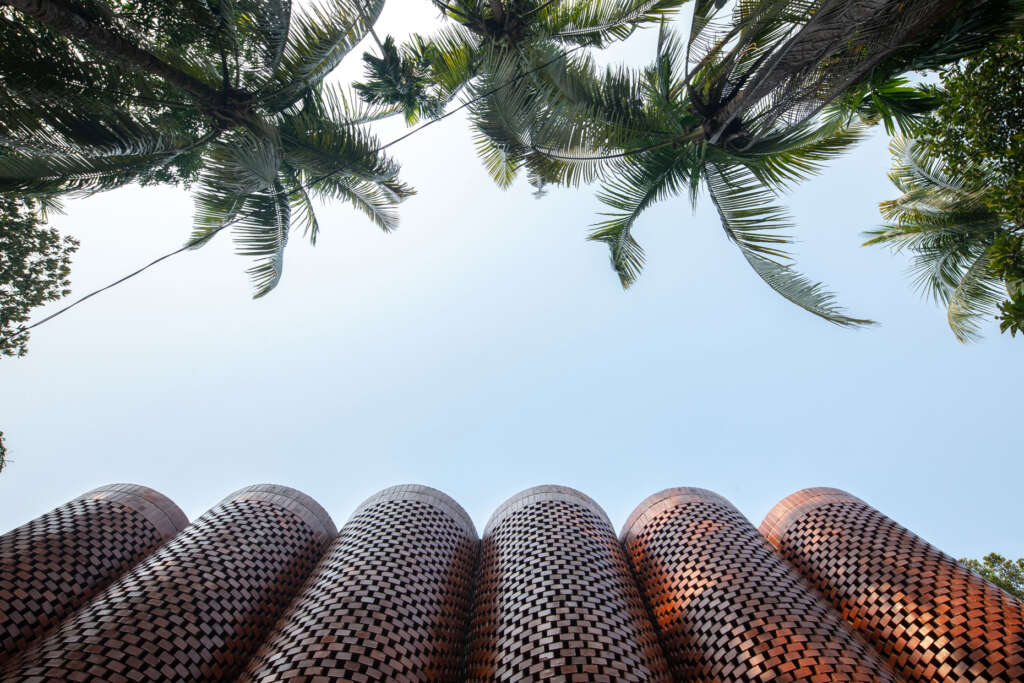
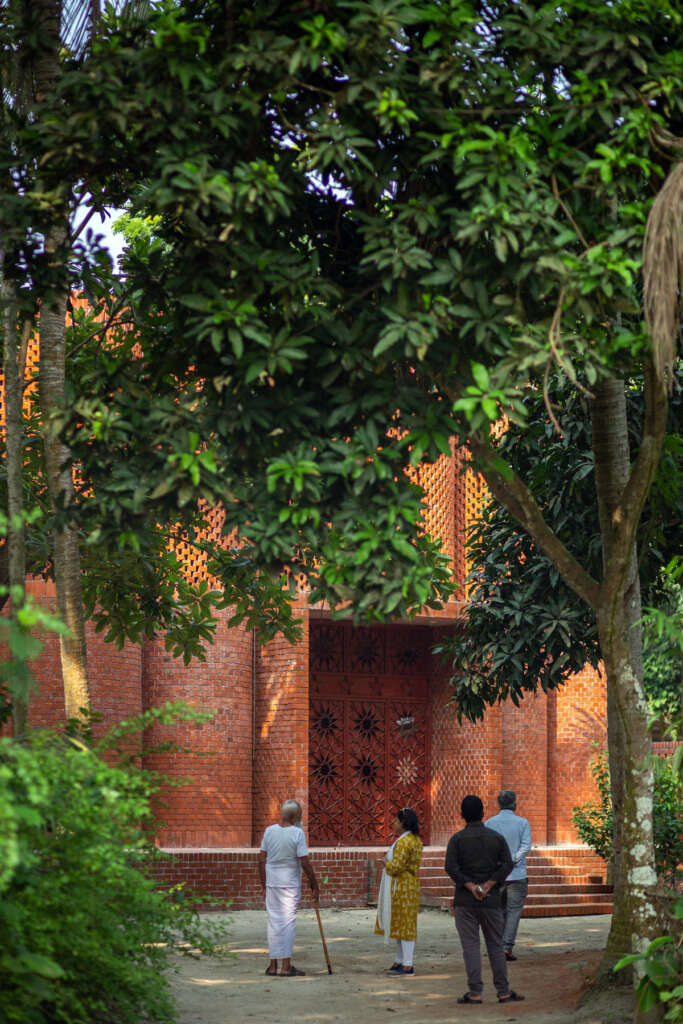
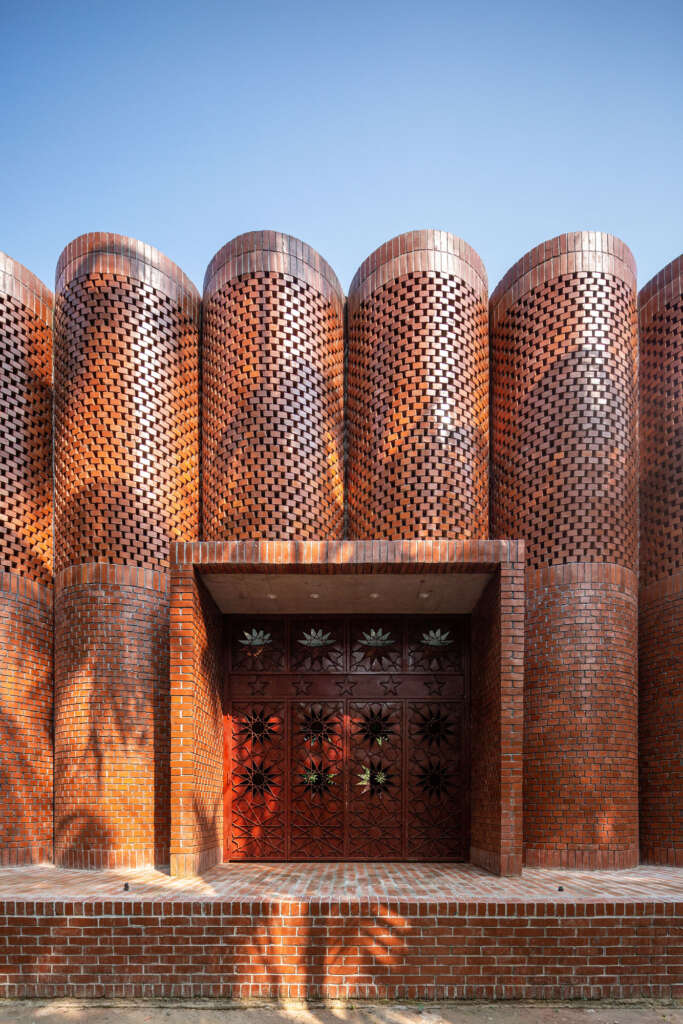
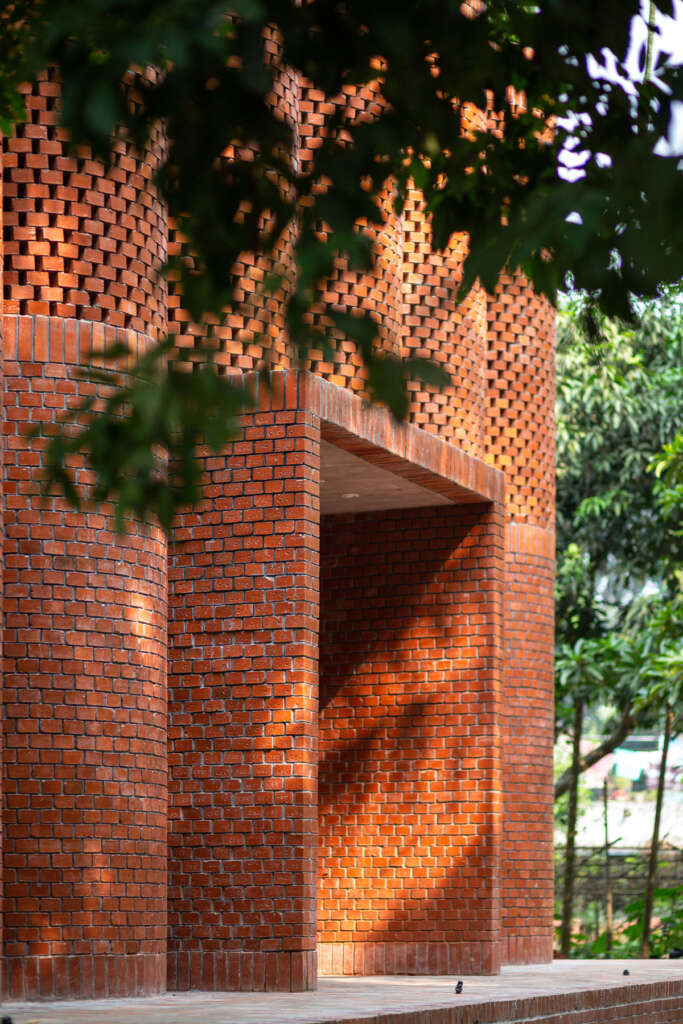
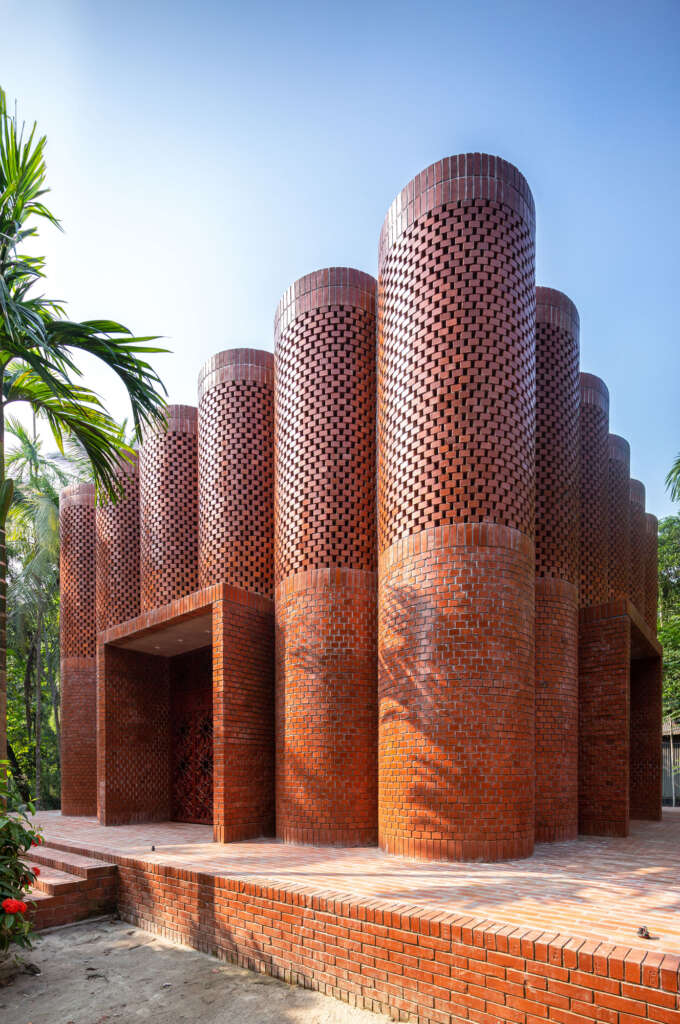
Concept: Chandelier of the Paradise
The Design approach evolves with techniques, available resources, ideology, and local culture and transforms these into an integrated solution that is naturally adopted by the local community. Generally, a Dargah is a home for the grave of a revered religious figure, often a Sufi saint or dervish. In Persian “Dargah” means “Portal”. Metaphorically, Dargah is the home for the earthly body and the soul travels to paradise through the portal and the chandelier of paradise connects the earthly body to the higher power by blessing them with holy light. The presence of graves and the pattern painted by the light of the chandelier creates a mysterious celestial ambience that intrigues a spiritual notion in human minds. The outer shell is the replication of our reality but the inner space moves the reality beyond it.
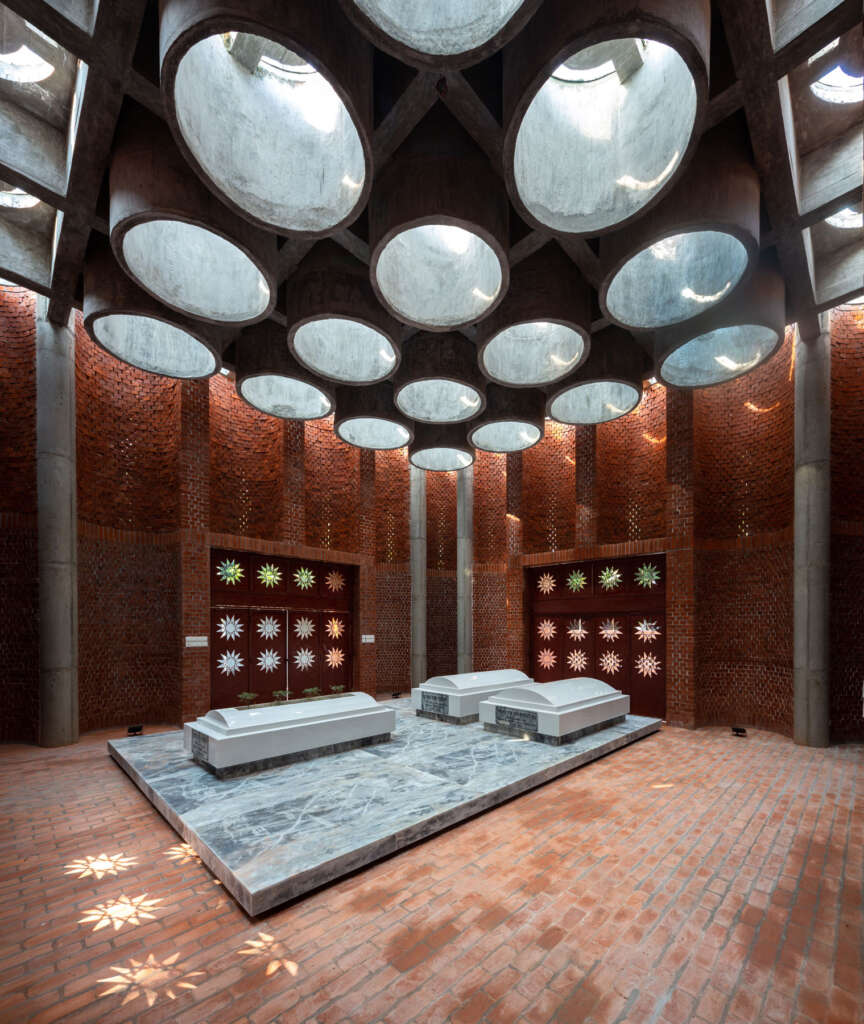
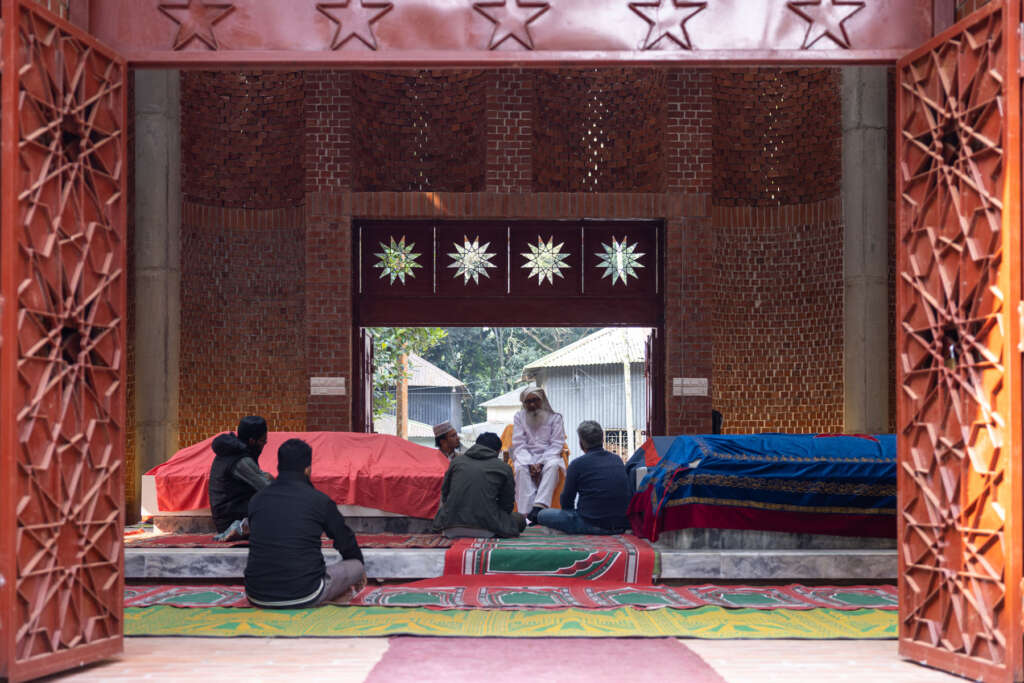
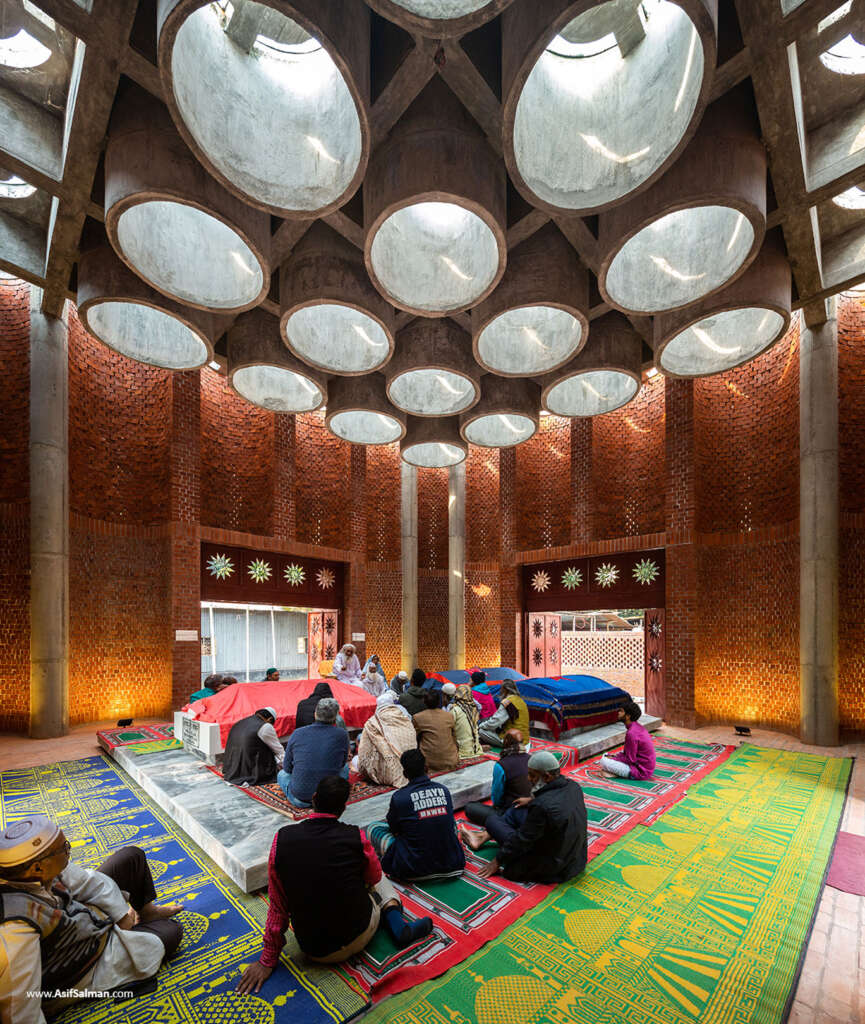
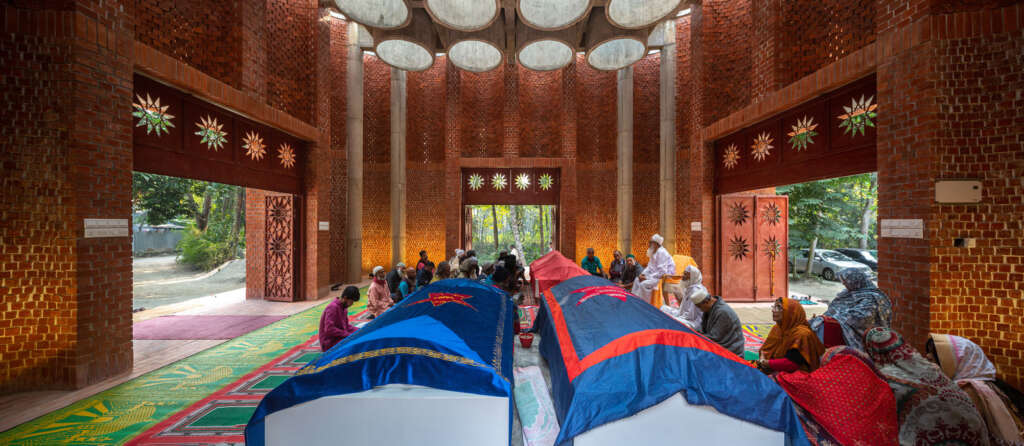
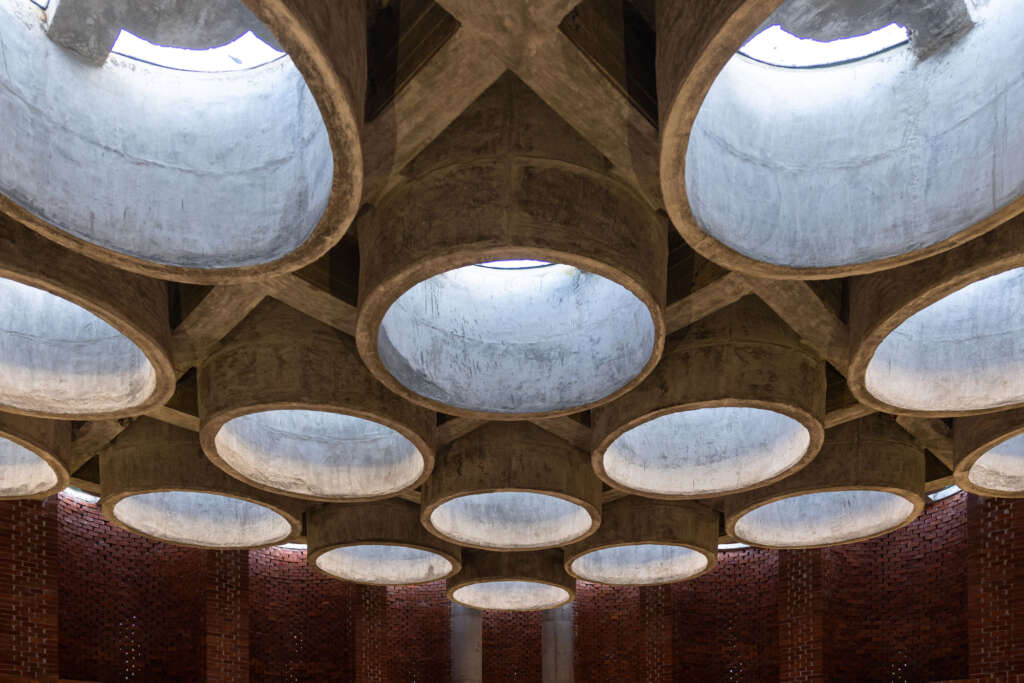
Form Generation
The square single unit was primarily used for tombs in this subcontinent Islamic architecture, (Koch, E. 1991). These tombs were mostly inspired by the traditional structure of the Bengal huts. The plan of Dargah adopted the same square shape plan measuring 36’x36’ and accommodates three graves on a white marble platform. Unlike the Vitti, of the traditional huts the plinth of the Dargah is also raised up to 3’. The project Blend in a natural context of a residential complex. Thus, the design tries to keep the approach informal and natural instead of creating an obvious entrance. Moreover, the approach hits the corner of the structure, giving a three-dimensional idea of the massing.
The height of the structure is almost 24’ on a 3’ square base. The ceiling, composed of thirty-six, circles are inspired by the multi-domed mosques of the Sultani period. Out of thirty-six circular punches on the ceiling, sixteen become cylindrical droppings and hang from the waffle ceiling. The circular punches and hanging cylindrical droppings from the waffle roof all together appeared in a dynamic chandelier. Natural light seeps into the Dargah through the chandelier and creates a natural pattern on the floor. To establish the significance of any structure the corner turrets were frequently used in Sultani period Mosques. The side elevations of the Dargah are composed of reinvented repetitive turrets creating a familiar yet iconic composition that draws the attention of the community. The turrets are half circular and the upper part is perforated with jalis’ for natural lighting and ventilation.
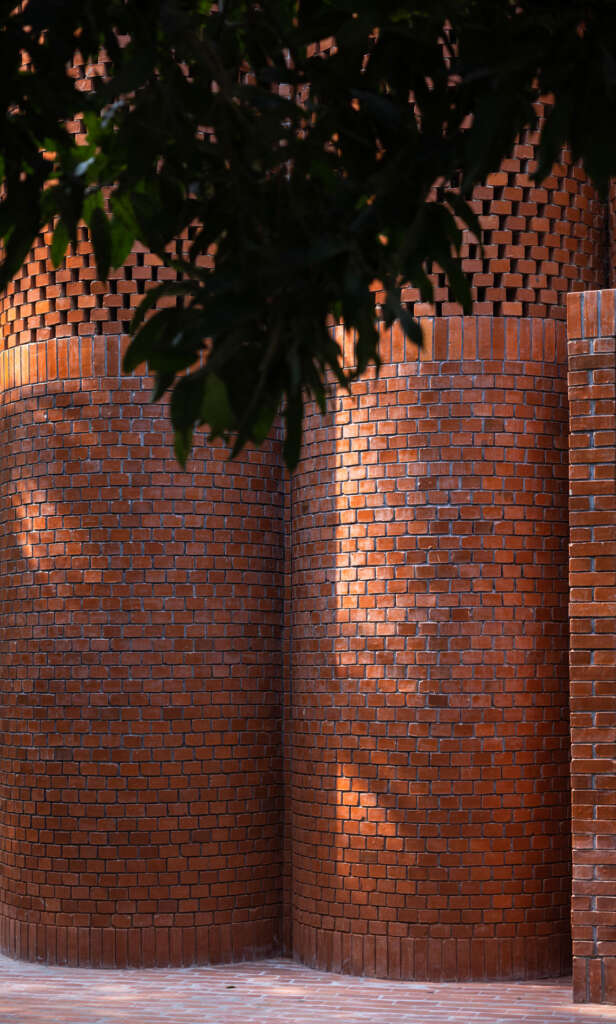
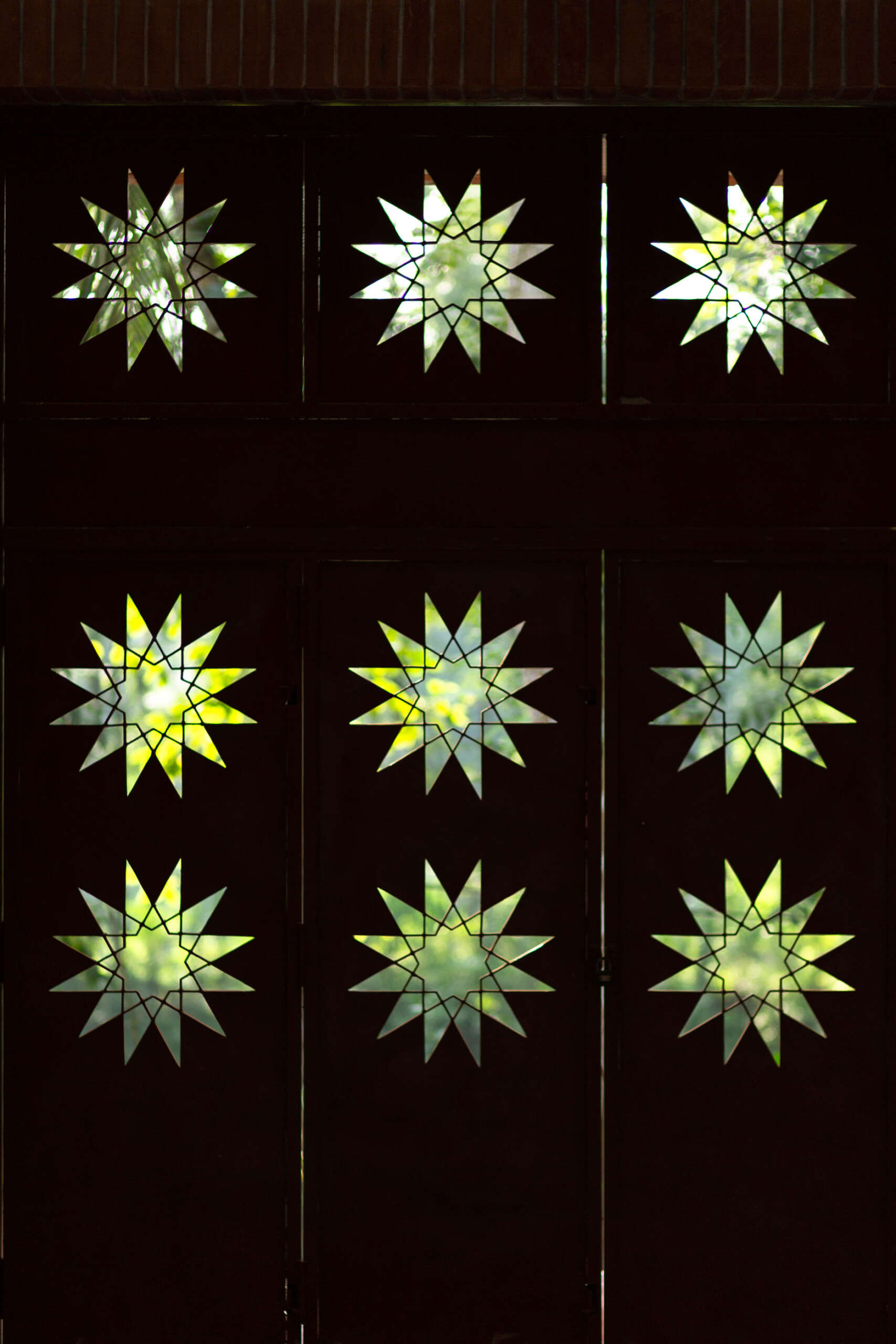
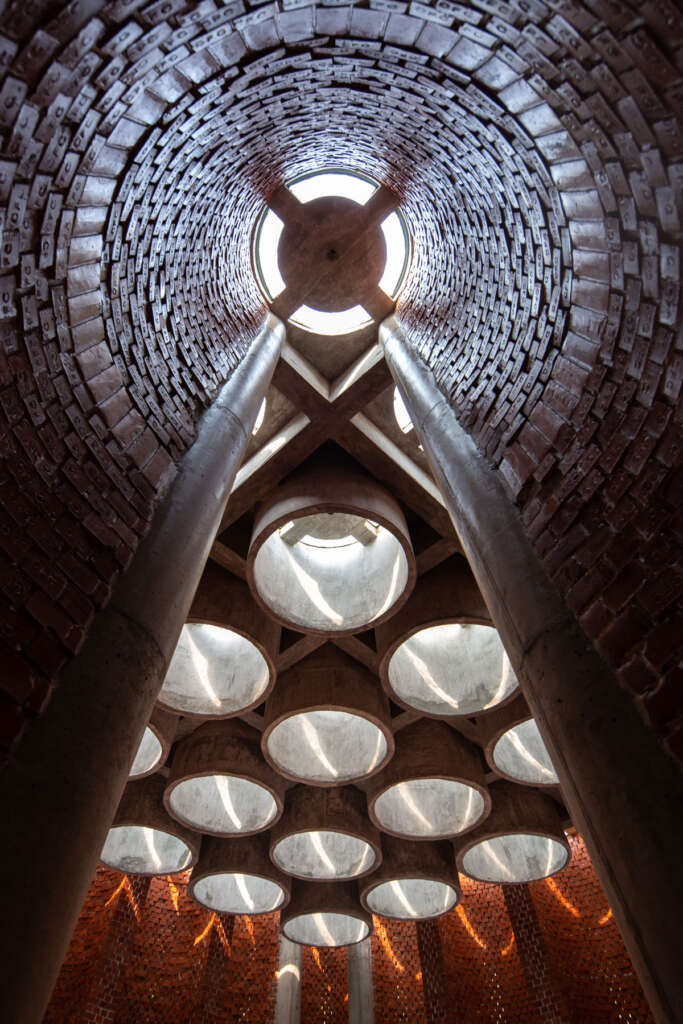
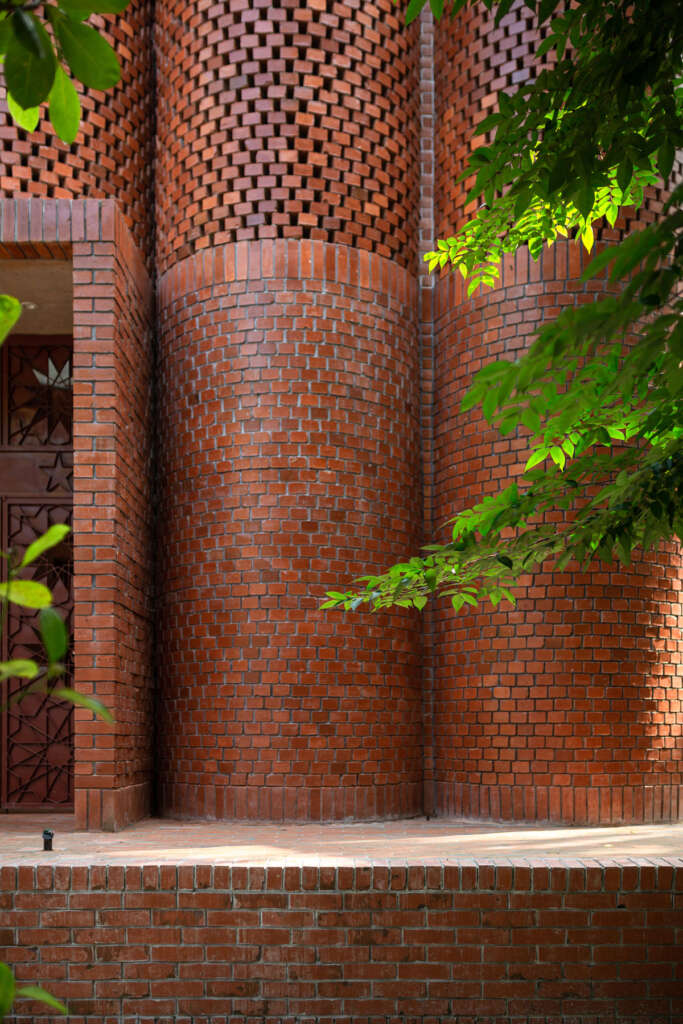
Constructional Intervention
Local masons and construction methods were employed due to the limited resources. Because of the natural length of locally found bamboo, the scaffolding needed to be constructed in three tries to construct the 21’ high ceiling. The most challenging part of the construction was hanging 6’ concrete cylindrical droppings from the waffle slab by using local construction techniques. Firstly, the waffle slab with circular perforation was cast then the cylindrical droppings were hung from it. Each of the cylindrical droppings required four parts of metal shuttering and every part consisted of two divisions of 3’ height to cast the 6’ droppings in between waffle structures. Natural light seeped through the perforated slab bouncing inside the cylindrical droppings, creating a dramatic ambience. The half-circular brick turrets are cast in reference to the edge of the chandelier ceiling.
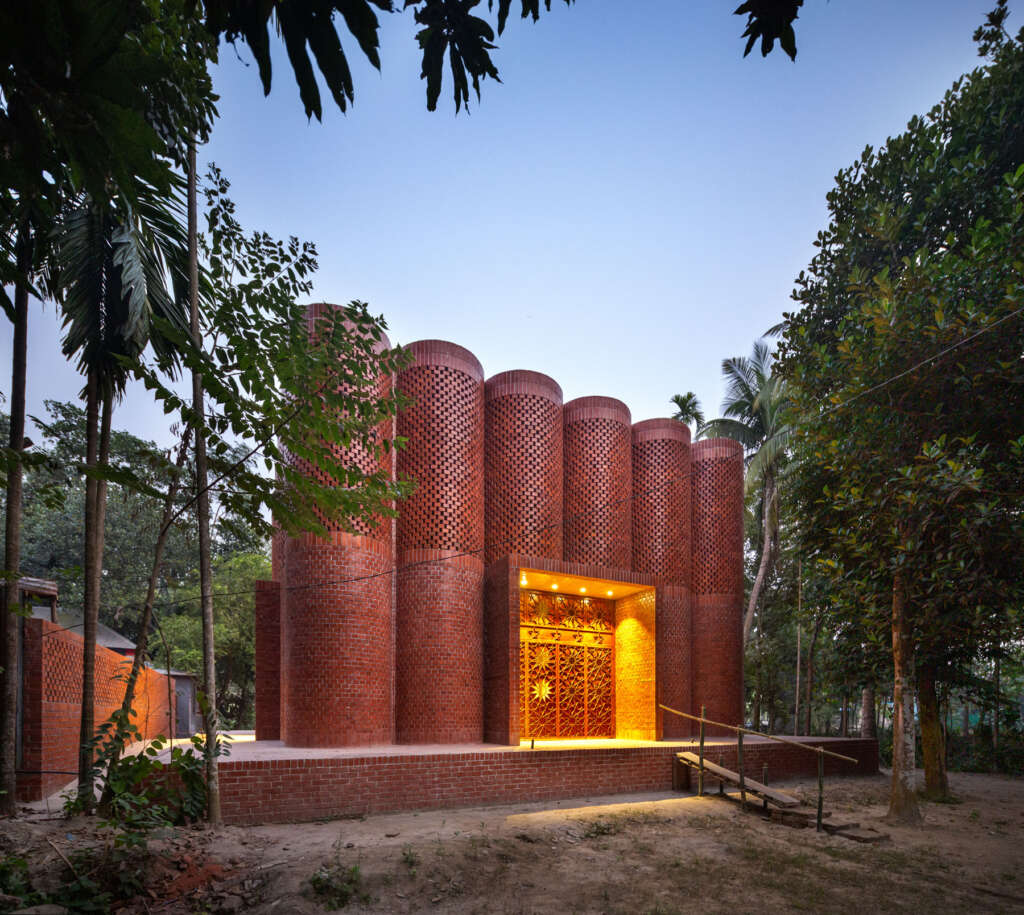
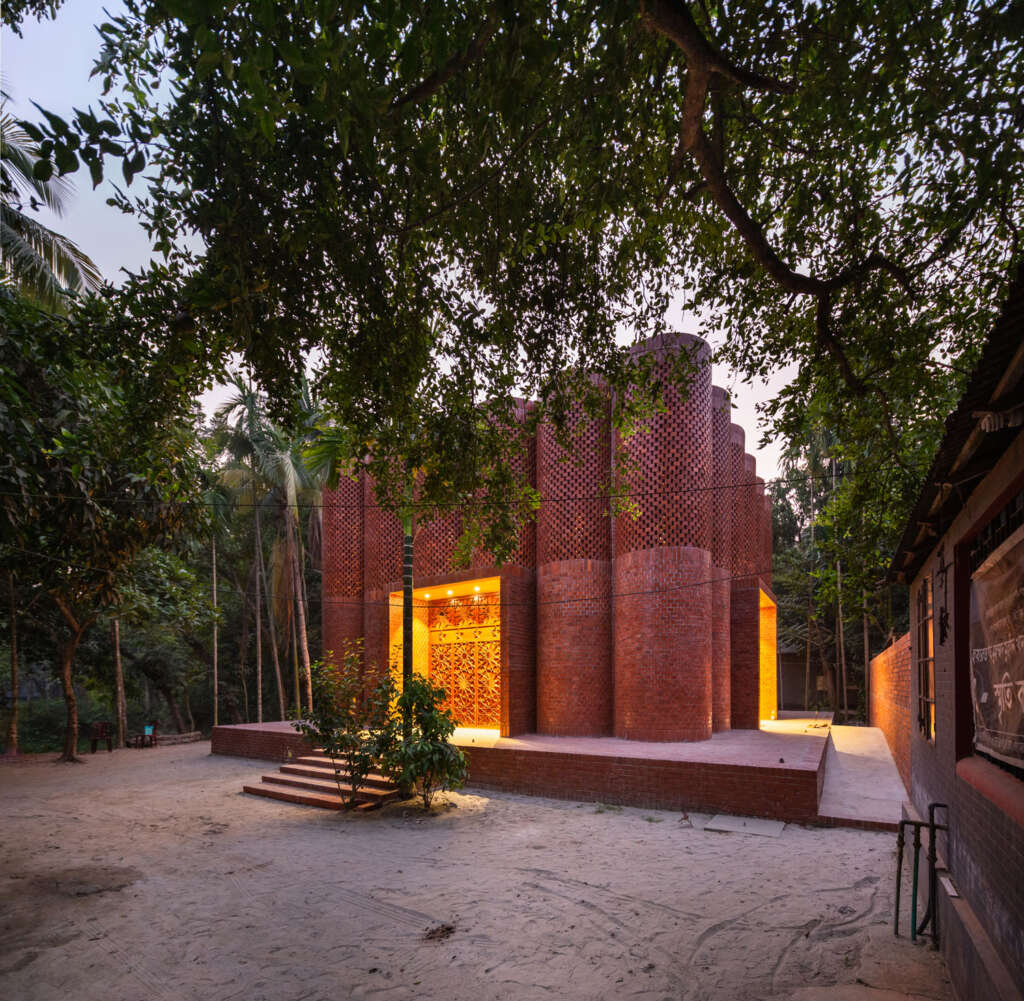
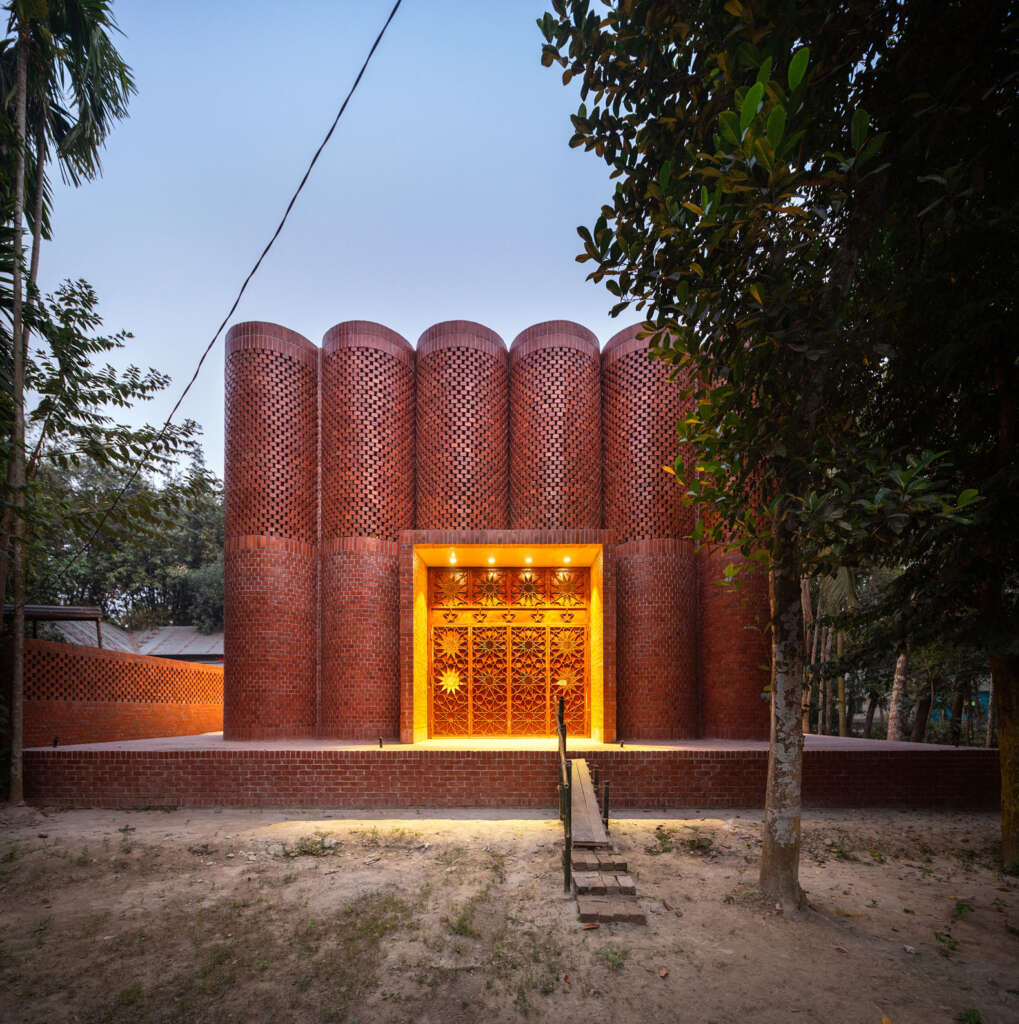
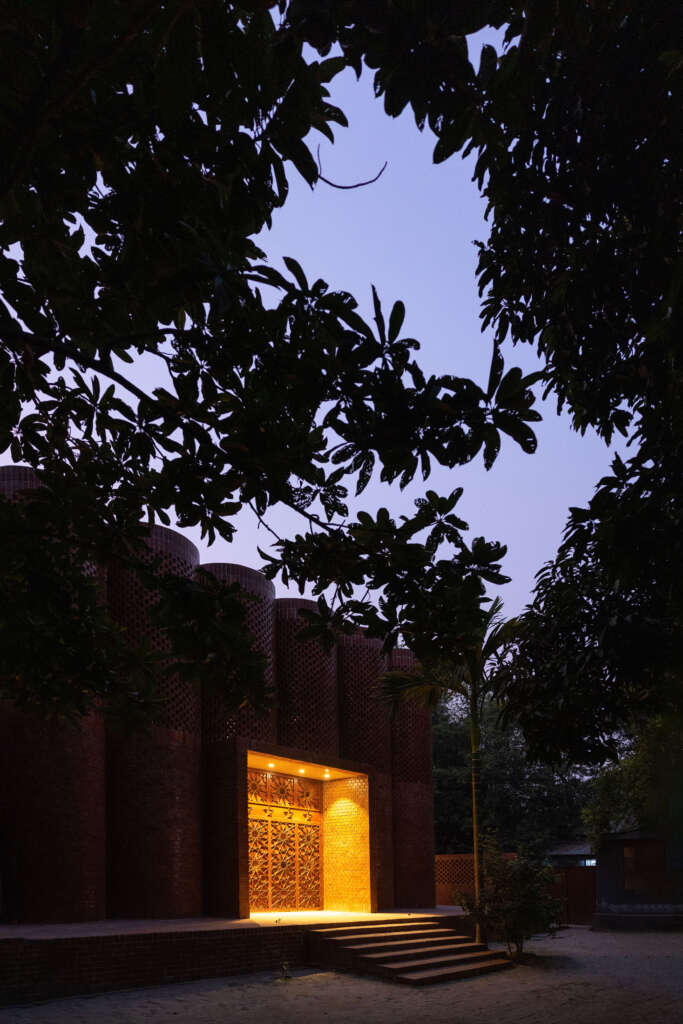
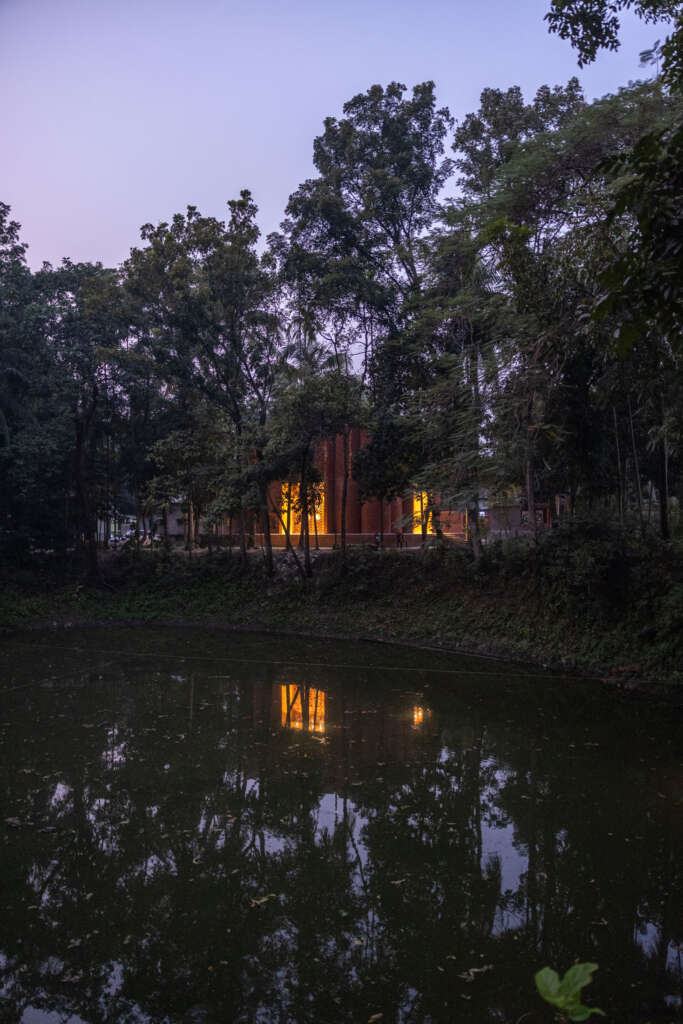
Materials
Brick dates in Bengal from the Buddhist Monasteries in the medieval period. In the Sultani period, brick and terracotta decoration was the primary material for the enclosure. Moreover, the community robustly recognizes the boldness of the red brick structure. To Achieve uniformity and create significance only red brick is used as the envelope and the base of the Dargah. To achieve localization in every sense naturally burned red bricks were hand-picked from the nearby brick field. Structural elements—columns, slabs, and cylindrical droppings—are made of concrete because of their functional need to support the bigger span and load of the droppings, and flexibility in construction. Three graves are placed on a raised white marble base on the brick floor.
Drawings
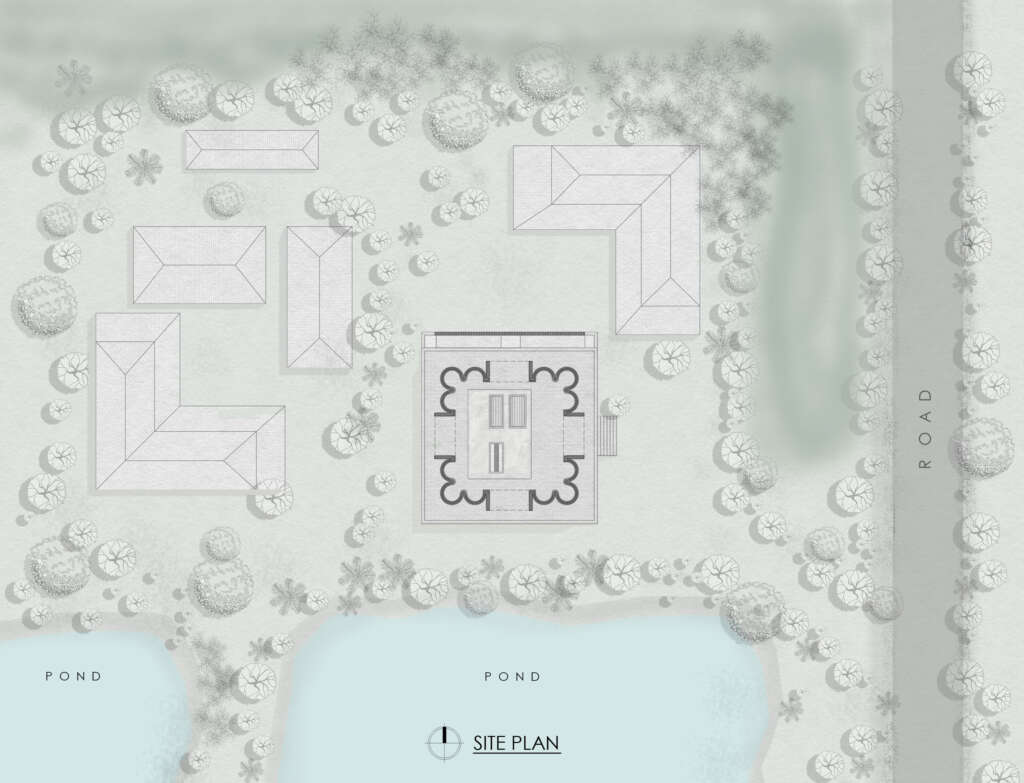
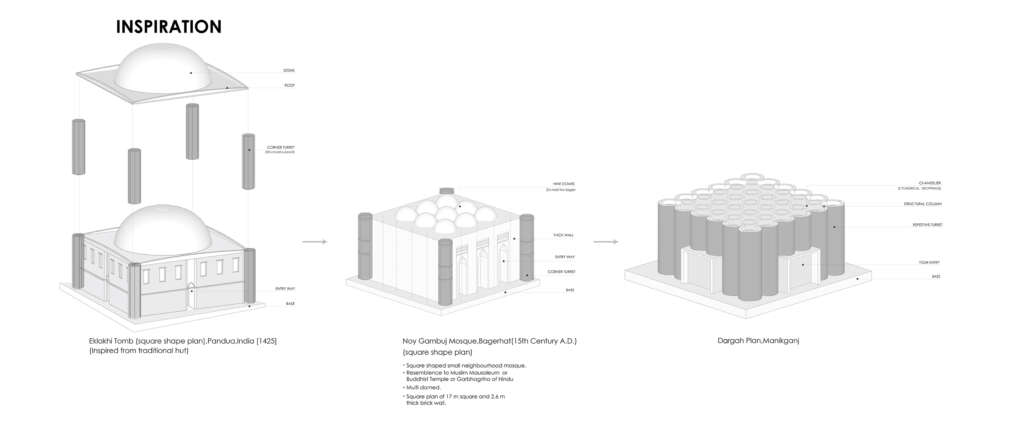
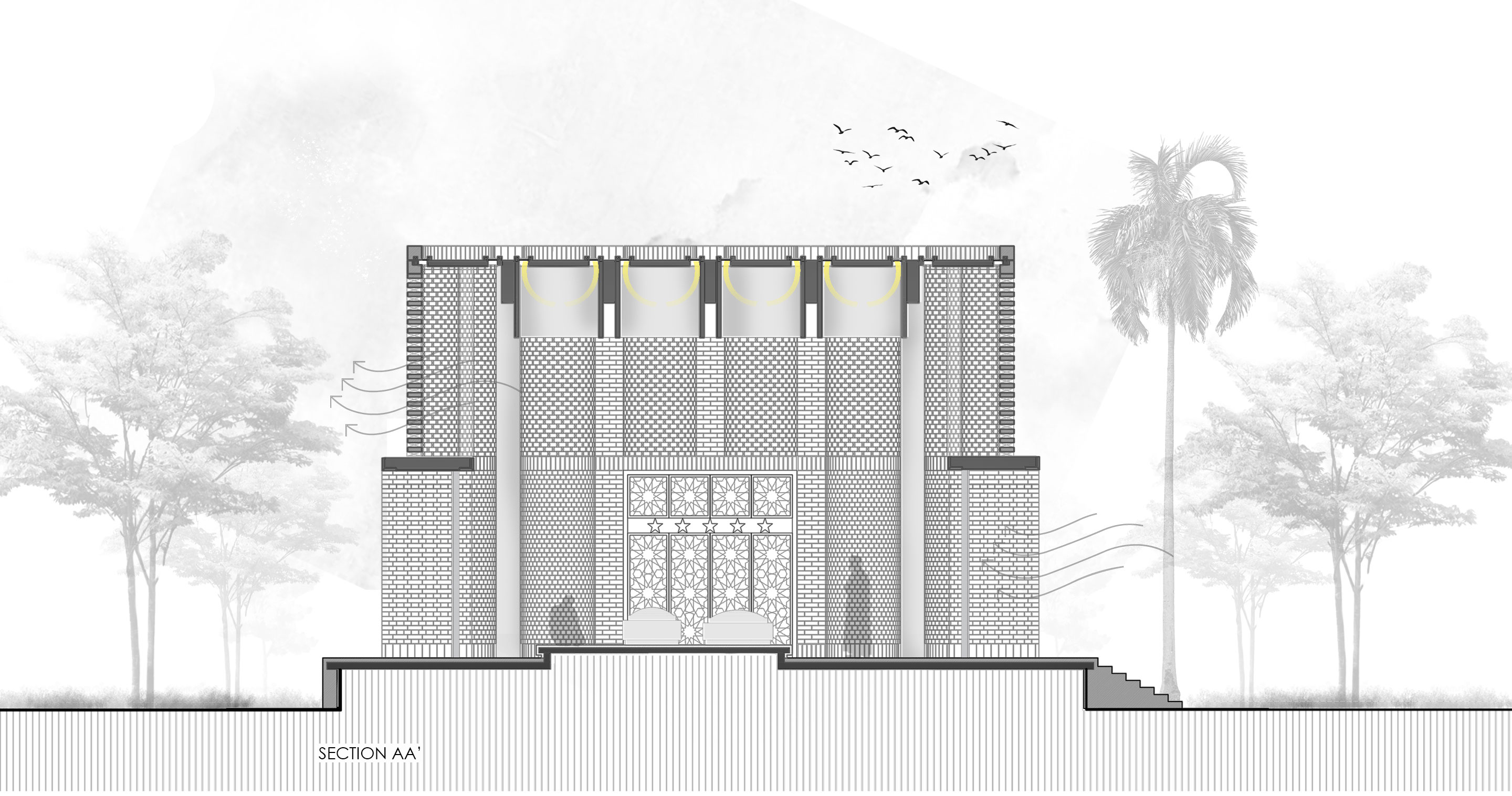
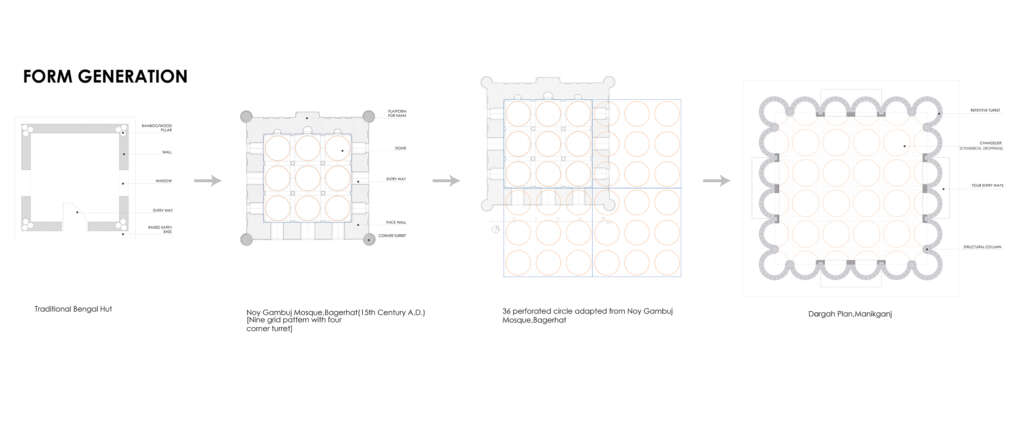
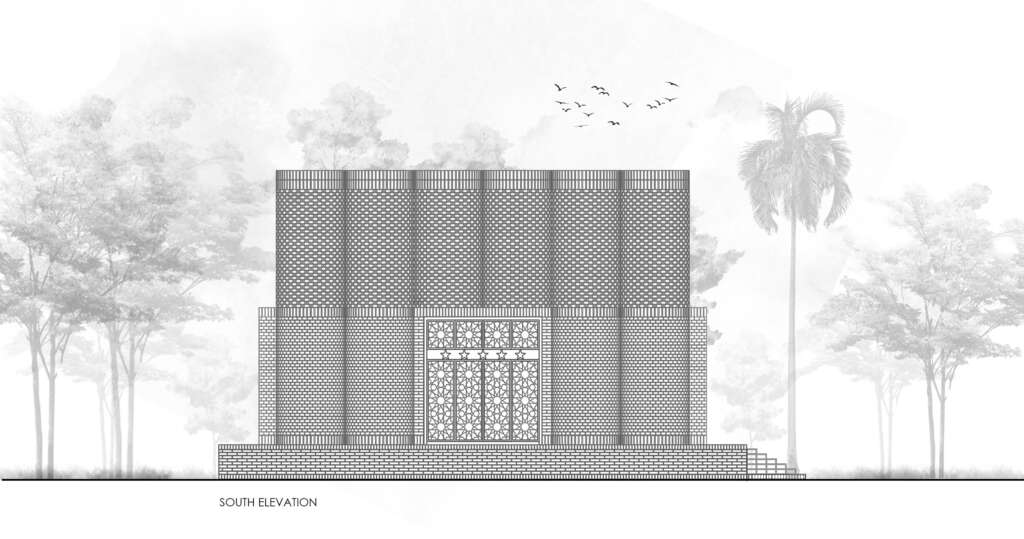
Project Details
- Office Name: Sthapotik
- Lead Architects: Ar. Md. Sharif Uddin Ahammed
- Project Team: Ar. Md. Sharif Uddin Ahammed, Ar. S.M. Mushhfiqul Karim, Ar. Sadeka Badiozzamman
- Documentation Team: Ar. Md. Sharif Uddin Ahammed, Ar. Syeda Saikha Sudah, Ar. Asifa Jamal
- Completion Year: 2022
- Gross Built Area (m2/ ft2): 2116sqft With Base
- Basic Structure area: 36×36 sqft, 1296sqft
- Project Location: Shib Bari, Hijuli, Manikgong, Dhaka, Bangladesh
- Program: Ancestral Mausoleum
- Photographer: Asif Salman




